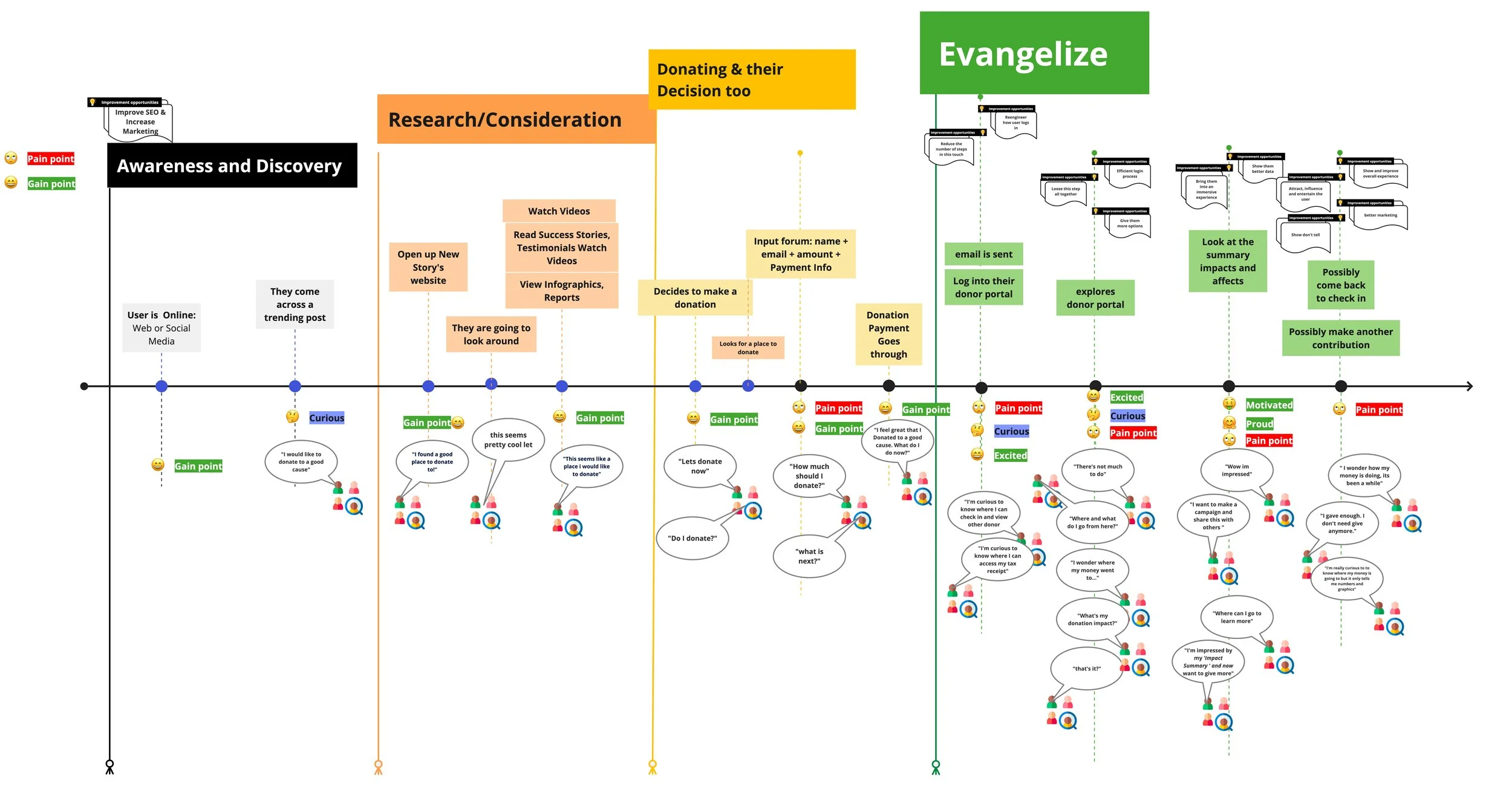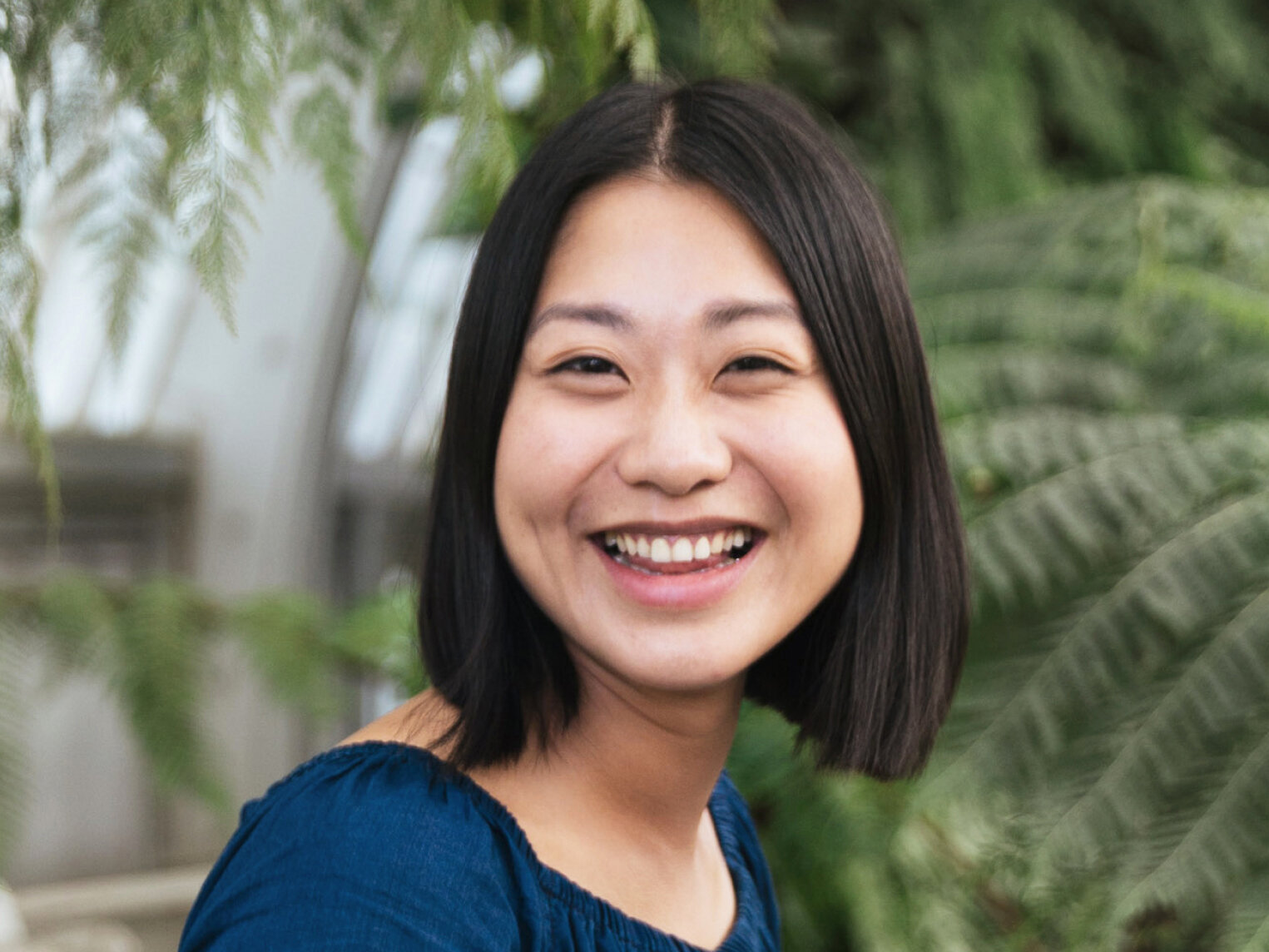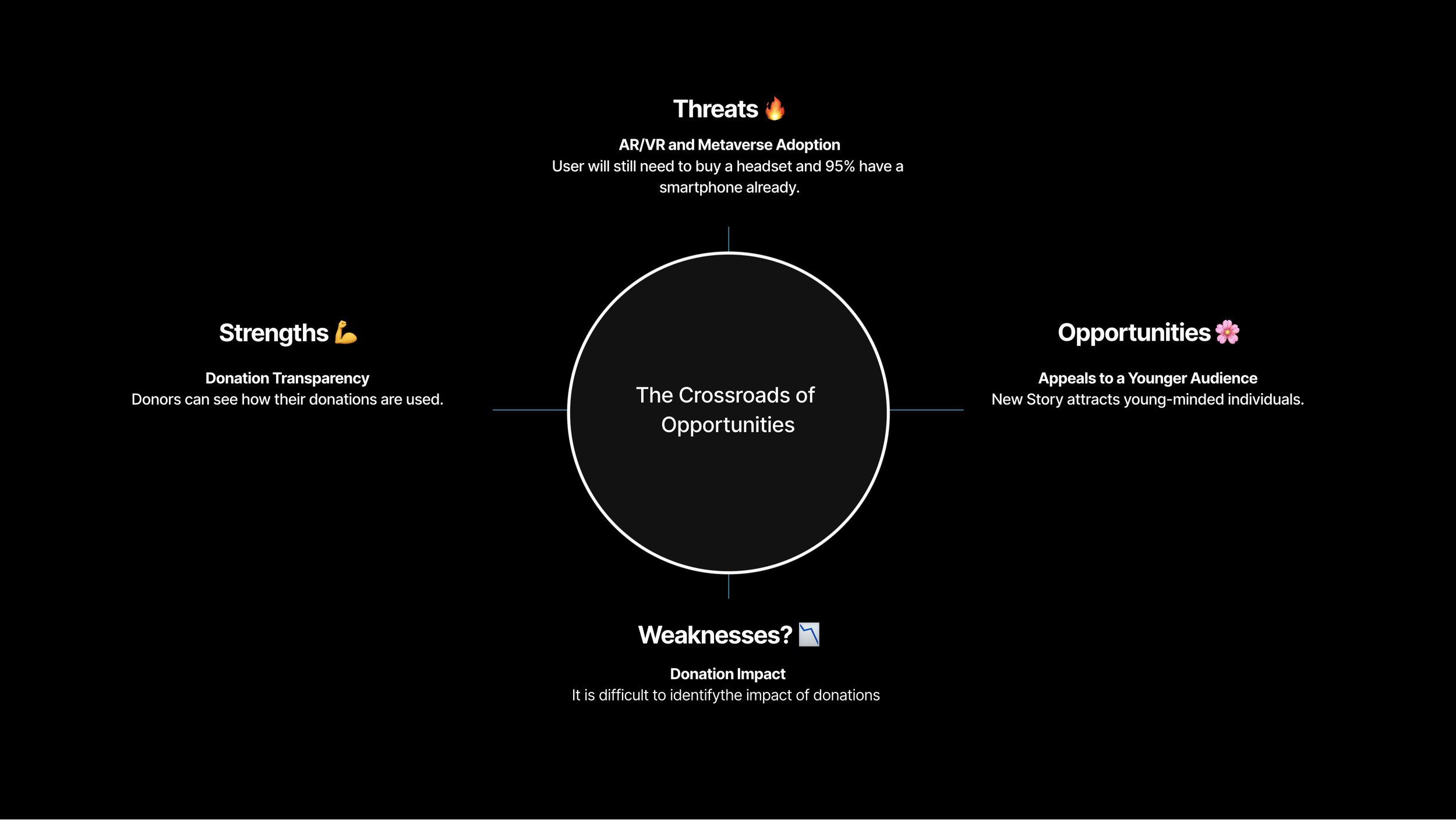HERO
the mysteries of giving — where your donations are the key to a revolution in immersive philanthropy
Role • Solo UX Designer
Methods • User Research, Wireframes, Prototyping
Category • Immersive App
Year • 2023
Background
This project to revolutionize donor engagement through an immersive donation application. This initiative aimed to make the effects of donations vivid and tangible through interactive features, visuals, and potential 3D or augmented reality elements, addressing the need for a more engaging and transparent donor experience.
Project Overview:
Problem STATEMENT
The challenge was about bridging the gap between donors and the visible impact of their generosity. Donors needed help seeing the real-world effects of their contributions, leading to a disconnect that hindered engagement and support for vital causes. The issue was multi-layered: donors encountered frustrating interactions along their journey, needed help understanding the impact of their donations, found sharing their impact stories cumbersome, and struggled to connect deeply with the change they were part of.
Goal
The goal was to transform the donation experience into a more engaging, transparent, and meaningful journey, thereby enhancing donor satisfaction and encouraging increased sustained philanthropic support.
Client
New Story is a non-profit organization that is focused on solving homelessness through innovative housing solutions, 3D-printed homes for those in need. In 2014, the organization aims to provide safe, affordable, and sustainable homes to those in need while emphasizing dignity and transparency in its operations. By leveraging technology and community involvement, New Story seeks to make a large-scale impact on global housing issues.
Relevance
During a period marked by a growing demand for transparency and authentic connections within the philanthropic sector, this project marked a notable pivot forward. By revolutionizing how donors interact and connect with causes, it addressed and eased fundamental obstacles, enriching the donor experience profoundly. This method empowered me to engage with critical matters effectively, enhancing the donation process and providing meaningful support in the global fight against challenges, including homelessness.
Objectives
Interactive and Accessible: I aimed to create a platform that's easy for donors of all tech levels to navigate and engage with.
Story Sharing: I wanted to enable donors to share their impact stories through text and visuals, making the results of their contributions more tangible and shareable.
Awareness of Impact: It was crucial to provide real-time updates and detailed information about the impact of donations, including the needs addressed and the communities helped.
Innovative Visualization: Exploring advanced technologies like 3D modeling and augmented reality was a key objective to enhance the storytelling and visualization of donors' impact.
Empathizing
In the quest to deeply understand and empathize with the users, I embarked on a comprehensive research journey, focusing on a diverse audience ranging in age from 18 to 60, with a significant portion between 18 and 30 years old. This demographic consists of donors who contribute between $1 and $1000, often on a monthly basis, and are most active on social media and the dashboard. To grasp the nuances of their experiences and challenges, I developed a journey map.
Target Audience Pain Points
A journey map was developed to understand exercise habit formation. It features two paths: an ideal (green) and a negative (red) journey based on user emotions and experiences. This tool helped identify critical points where users might have problems and offers insights for effective interventions. The goal is to guide users toward successful habit adoption and long-term maintenance.
"Where can I can check in and view other donor information I need?"
"Where and what do I go from here?"
" I wonder how my money is doing, its been a while."
"This was so cool, I want to share this with others."
"What does my donation impact?"
"How much should I donate?"
Market Research:
S.W.O.T. Analysis
I used a S.W.O.T. analysis to assess a strategic position, identifying internal strengths and weaknesses and examining external opportunities and threats. This approach helped ensure a well-rounded evaluation, and the insights gained were crucial for shaping future strategies and making informed decisions
Brainstorm & Analyze
Sketches & Ideation
I started brainstorming and drawing out the sketches for different design solutions. The focus was on making the donations interactive and impactful
Final Design
Solution: I continued to work on the design and refine the paper prototype, forming it into a high-fidelity final prototype.
HERO
The pocket-size solution to end global homelessness, at your fingertips
Features:
-
-
Description text goes here
-
Description text goes here
-
Item description
-
Item description
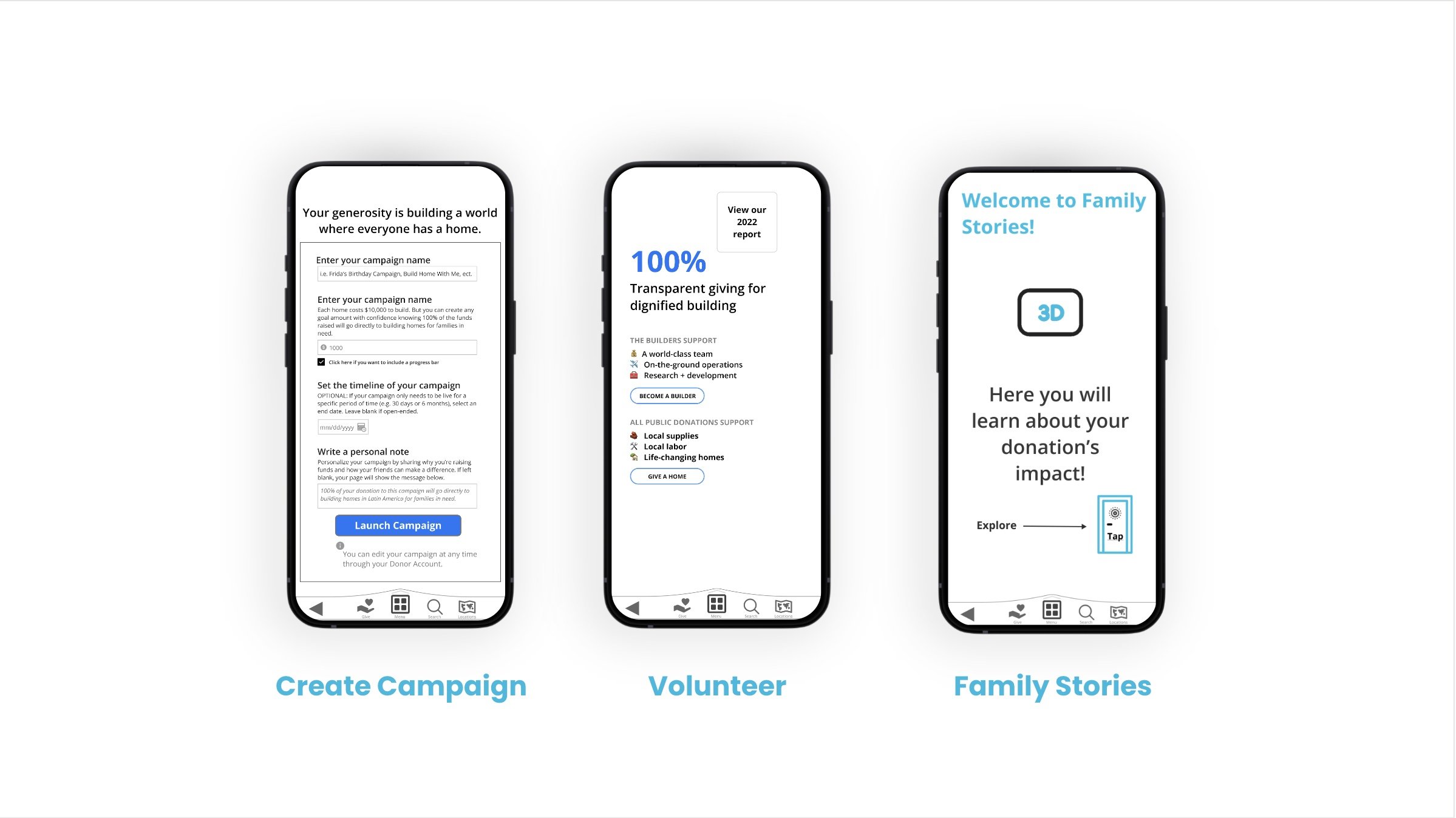
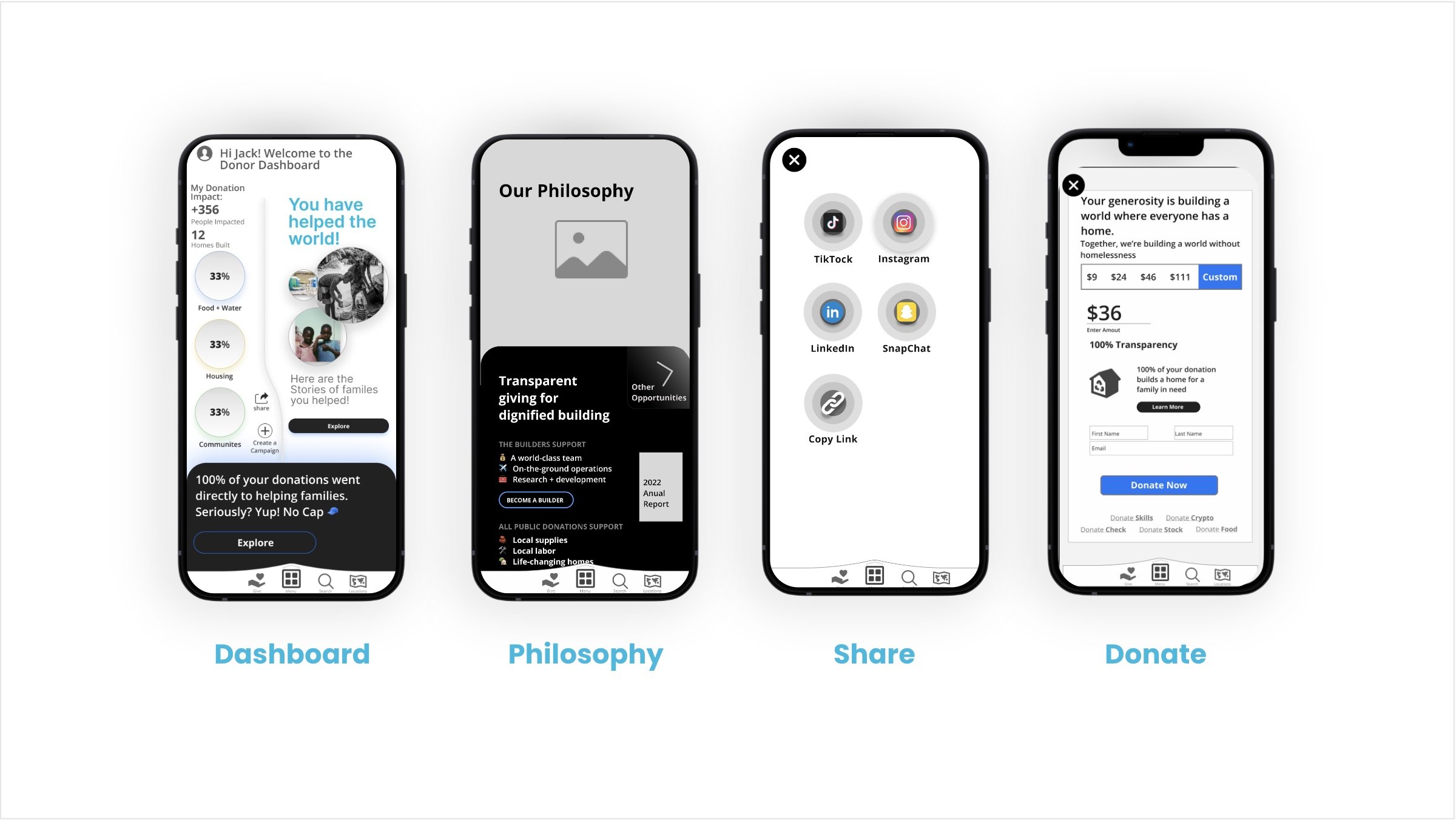
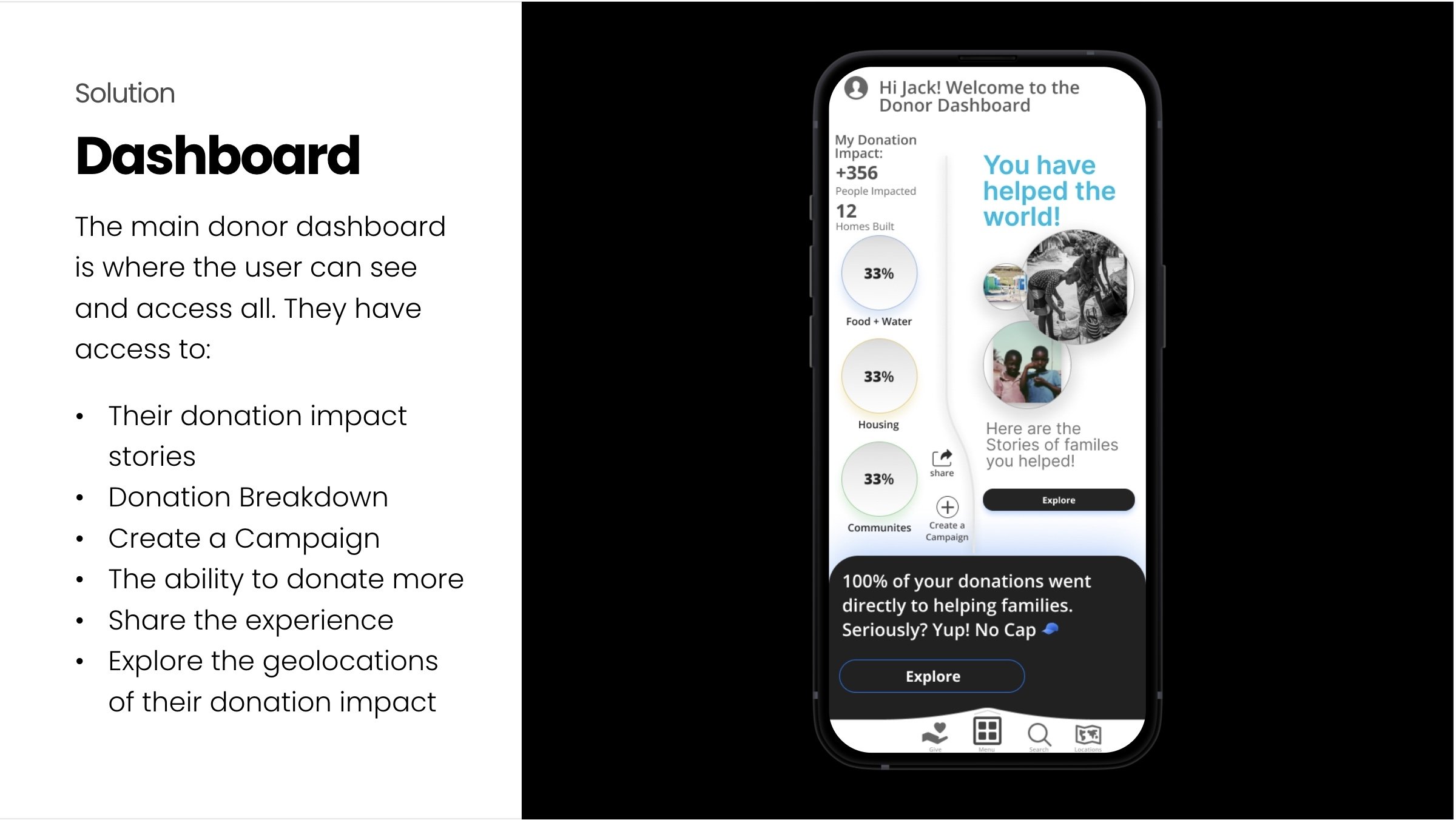


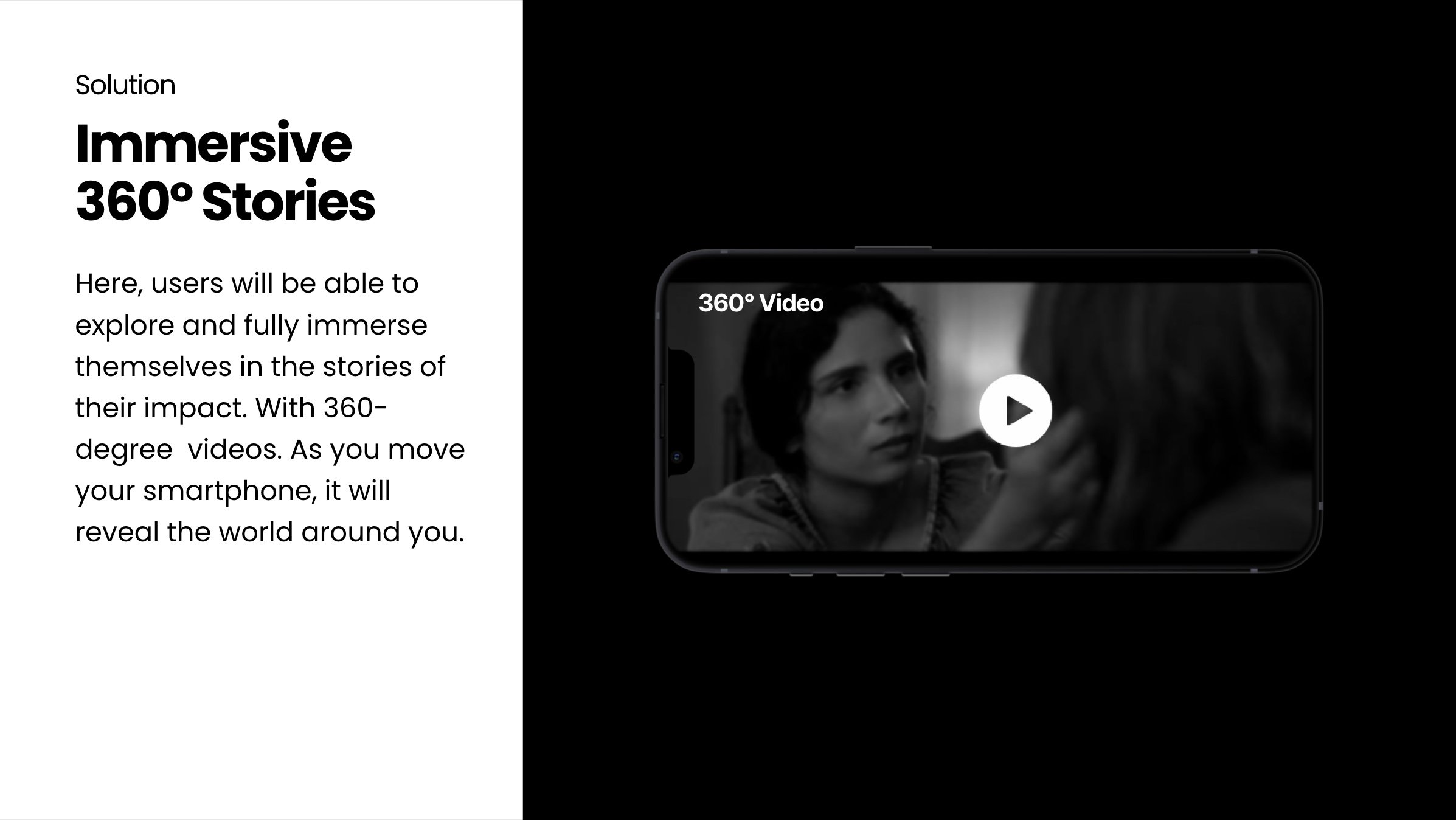
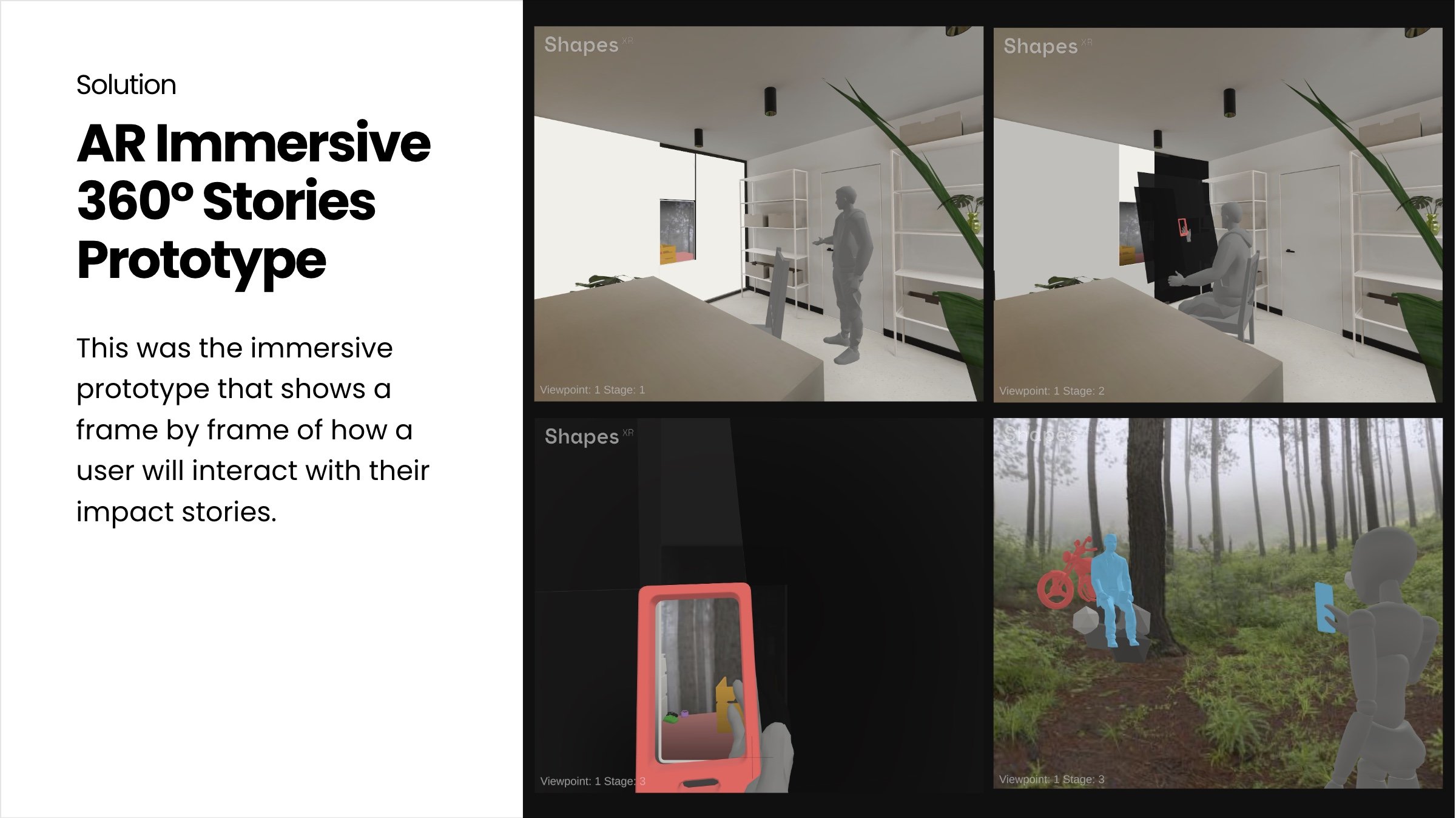
Reflection:
What’s Next?
In the future, I would like to do more user research and incorporate more user testing into the design. I think that it would lead to more user-centric and effective designs, ensuring that the final product aligns closely with user needs and preferences. This approach would enhance user satisfaction and the overall success of the product.
What did I learn?
Even though a lot of research went into this project, it may have used more research. This should help the emphasis on user needs, market trends, and the outcomes it has on the user and the community.
Additionally, I've learned the significance of documenting my process more rigorously, ensuring more transparency and effective communication of the design process, and facilitating better collaboration with team members and stakeholders.
What would I have done differently?
Reflecting on the decision not to implement a social filter earlier, it's clear that such a filter could have significantly improved interactions by screening content and behavior according to specific criteria. The most challenging part was the technical aspect, and if I had more time, I would have gone with that option. Moving forward, the focus would be on integrating a social filter thoughtfully, taking into account feedback and evolving social norms to enhance communication and community dynamics.

